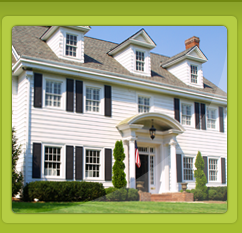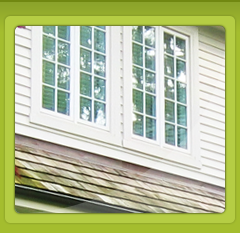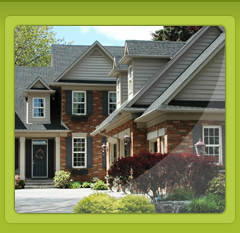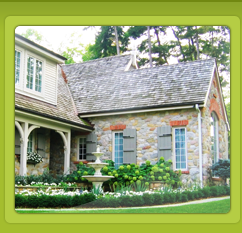Insurance Claims
Hailstorm, wind and cyclone damages are considered an insurance reduction on your resident’s policy. Most insurance policy firms will pay the entire expense, less your deductible, for changing the roof covering if it is harmed. The case is also considered a natural catastrophe and does not count against you for future fee rises. Outstanding Roof covering focuses on accident and weather condition related damages repair work and replacement; consisting of exterior roof covering, rain gutters, siding, widows; and indoor paint, sheetrock, ceiling structure, flooring, and carpet cleansing. We will certainly aid you handle your insurance policy company and meet your insurance coverage adjuster if asked for. Our participation avoids you from acquiring stuck to a negotiation that will not cover your costs, and even worse, getting refuted. With Excellent Roofing you pay no out-of-pocket expenditure besides your insurance coverage deductible. We accept accept exactly what your insurance policy company will certainly spend for the claim, featuring your insurance deductible, and make sure the best repair or substitute. You could additionally take advantage of upgrades that we normally offer as signing motivations, such as updating the consumer from 3-tab tiles to home roof shingles at no additional cost.
Claim Process
PHASE 1. INITIAL INSPECTION
After a sever hail or wind storm it’s a good idea to have a professional certified inspector perform a thorough survey of your property. Hail and wind damage is almost impossible to see from the ground and can cause major issues if ignored.
When you call JNS Restorations and schedule a free no-obligation inspection, you will be greeted promptly on the date you chose by one of our trained specialists.
After introducing themselves they will perform home inspection, which will include your roof, siding, gutters, and any other items that could possibly have been damaged during the storm.
The average time for an inspection is around 15 to 30 minutes.
While the inspection is taken place, It’s also a good idea to take this time to locate your insurance policy number and have it ready for your rep in case any damage is found.
PHASE 2: PLACING A CLAIM
Once the JNS Restorations Rep is finished inspecting the property, they will then go over the entire claims process with you and answer any and all questions and concerns you may have.
After your rep is finished documenting all the damage in his report and answering all your questions, he will then assist you in calling in your claim. Your JNS rep will help you answer all questions being asked, related to the storm and also give your insurance company a detailed description of what was found during the inspection.
Lastly, your representative will put in a request to meet with an insurance adjuster to verify all the damaged items found on your property and also document your claim number for you.
After calling in your claim, your rep will make sure that you have all your documents neatly organized into your own personal customer folder.
PHASE 3: THE ADJUSTING PROCESS
Now that your claim has been filed, it will be assigned to an adjuster who will handle your claim from then on.
Within 24 to 48 hours, the adjuster will then contact you to schedule a time and day to come out and inspect the property to verify the damage found by your JNS Restorations Rep.
After a date is set, call your JNS Rep and notify him of the time and day. It’s extremely important that your Rep be present the day of the meeting to represent you and make sure that all the damaged and necessary items to restore the property are included.
When the inspection is complete, both your adjuster and JNS Rep will speak with you together to clarify which items where approved for replacement.
After the adjusting process, you will receive an itemized work scope detailing all the estimated repairs that are to be completed.
Once you receive your work scope, your project manager will meet with you to go over all the documents and discuss the details of the work that is going to be completed.
During this time we’ll go over color selection .
Before your work order is complete, your project manager will perform a walk around of the property to make notes and take pictures of any issues that may arise during the install.
PHASE 4: SUPPLEMENTING
What is a Claim Supplement? A claim supplement is a charge that must be added to a claim for any items omitted, overlooked, under paid or discovered before or after the project begins.
After your work order has been completed, your JNS Rep will process all the paperwork, including a copy of your itemized insurance work scope. .
While your work order is being processed JNS has a highly trained Supplemental Department that will carefully review the work scope for such things as missing damaged items, incorrect pricing or measuring. This will ensure you get the maximum amount of funds needed to restore your property.
If any missing items are found, our supplement department will then contact your insurance adjuster about making the necessary corrections.
After the corrections are made you will then receive a revised work scope detailing the alterations, along with a check for the amount of the supplemental items approved.
PHASE 5: RESTORING YOUR HOME
After your work order has been completed and processed. Our install department will then begin ordering the material needed for your project.
During this time, please remember that the weather plays a big factor as far as which day you will actually be getting installed. Our main concern is to perform a superior installation, and to do so we must have suitable temperatures and working conditions.
A few days before your install is to take place, you will receive a call from our installation department, notifying you of the day your material is to be dropped off, as well as your install date.
During your install, your project manager will be present to make sure that everything is running as smoothly and efficiently as possible. Your Project Manager will also inform you of anything unforeseen, such as rotten wood replacement.
During your restoration process, if you are having multiple trades done, they will be installed on separate days in the following order. Roof, siding, gutters, punch out, etc… This is to prevent any damage occurring to any newly installed material.
PHASE 6: RECOVERING DEPRECIATION
Once the work has been completed, your JNS Rep will file a completion certificate. This completion certificate, along with any necessary invoices and documentation will be sent to your insurance carrier, requesting that your depreciation funds be released.
Your home and most of its contents may lose value over time due to factors such as age and normal wear and tear. This loss in value is commonly known as “Depreciation.”
Under most insurance policies, claim reimbursement begins with an upfront payment for item(s) damaged at the time of the loss. This is what’s referred to as ACV or Actual Cash Value. If you have replacement cost coverage included in your policy, you will then receive additional money to cover the depreciation for items damaged after the work has been completed.
Insurance Claims – FAQ
Q. How do I know if I hail damage? My roof isn’t leaking.
A. In a hailstorm, most hail that hits your roof and house may be too small to cause any damage. However, a percentage of the hail may be large or irregularly shaped, which can cause severe damage that may not be readily apparent and may not start to leaking for some time. It’s best to have your roof inspected by JNS Inspection Team to determine if you need to file an insurance claim and have an insurance adjuster assess the total amount of damage incurred.
Q. The insurance company withheld depreciation on my roof. Will I get that money?
A. Yes. Most all house owners plans cover full substitute worth. The first check the insurance coverage company gives you is the Actual Value (AV); exactly what the roof is worth today with it’s helpful continuing to be life. The cash that was kept is call the depreciation, or technically, the Replacement Value (Recreational Vehicle) and will be paid to you when the job is completed or the majority of times after the submission of an authorized agreement with a certified specialist for the work specified in the insurance adjusters recap record.
Q. Why did the insurance company withhold depreciation?
A. There are two reasons that the insurance companies hold some money back. The insurance companies reason that, if you are given all the money to begin with, many people would naturally try to find a contractor who would perform the job for the dollar amount in hand. By holding a retainage amount, they can adjust the amount of the final payout based on the roofing contractor’s invoice, thus assuring that the customer does pay the deductible.
Q. How can I avoid paying the deductible?
A. Legally, you can’t. Of course, a roofer in collusion with a homeowner can submit falsified invoices. However, doing so is insurance fraud. Please don’t ask us to do this.
Q. On my paperwork, it looks like my insurance company has already deducted my deductible from the check they sent me?
A. There are two factors that the insurance companies hold some refund. The insurance firms factor that, if you are provided all the cash to begin with, many individuals would naturally look for a contractor who would carry out the job for the dollar amount in hand. By holding a retainage quantity, they could readjust the amount of the last payment based on the roofer’s invoice, thus assuring that the customer does pay the insurance deductible.
Q. The insurance is only paying for part of my roof, and my neighbor’s insurance company paid for their entire roof; why is my insurance company only paying for part of my roof?
A. No two houses receive the same amount of damage in a storm. Your neighbor may have sustained extensive damage, and you may have received none. The insurance company will only pay for the actual damages incurred. If the entire roof was not damaged, unfortunately the insurance company can not pay for the whole roof. However, if is it border line, it always helps to have your roofing contractor inspect the roof with your insurance adjuster to accurately assess all damage to the roof. Occasionally insurance policy adjusters might not have the ability to see all the damages if they’re unable to stroll on an action roofing system and picture particular locations. Outstanding Roof makes sure a handy presence to keep an eye out for your finest interest and help the insurance coverage adjuster if required with damage control, pictures, and measurements.
Q. Should I get several estimates?
A. It is always prudent to get more than one estimate. However, when insurance is paying for the work, the dollar amount of the estimate is not very important as long as it is equal to or less than the insurance company estimate. In all such cases, with Excellent Roofing, you will only be paying your deductible, so your cost with us will be what the insurance company pays, plus your deductible. Therefore, your decision should be based on going with the contractor that you feel most comfortable with and whom you feel will perform the best job.
Q. What if your estimate is greater than the insurance company’s estimate?
We can almost always work something out with the insurance company. The insurance company will review the supplement and upon approval, send a check for the additional monies needed to make the repairs.







